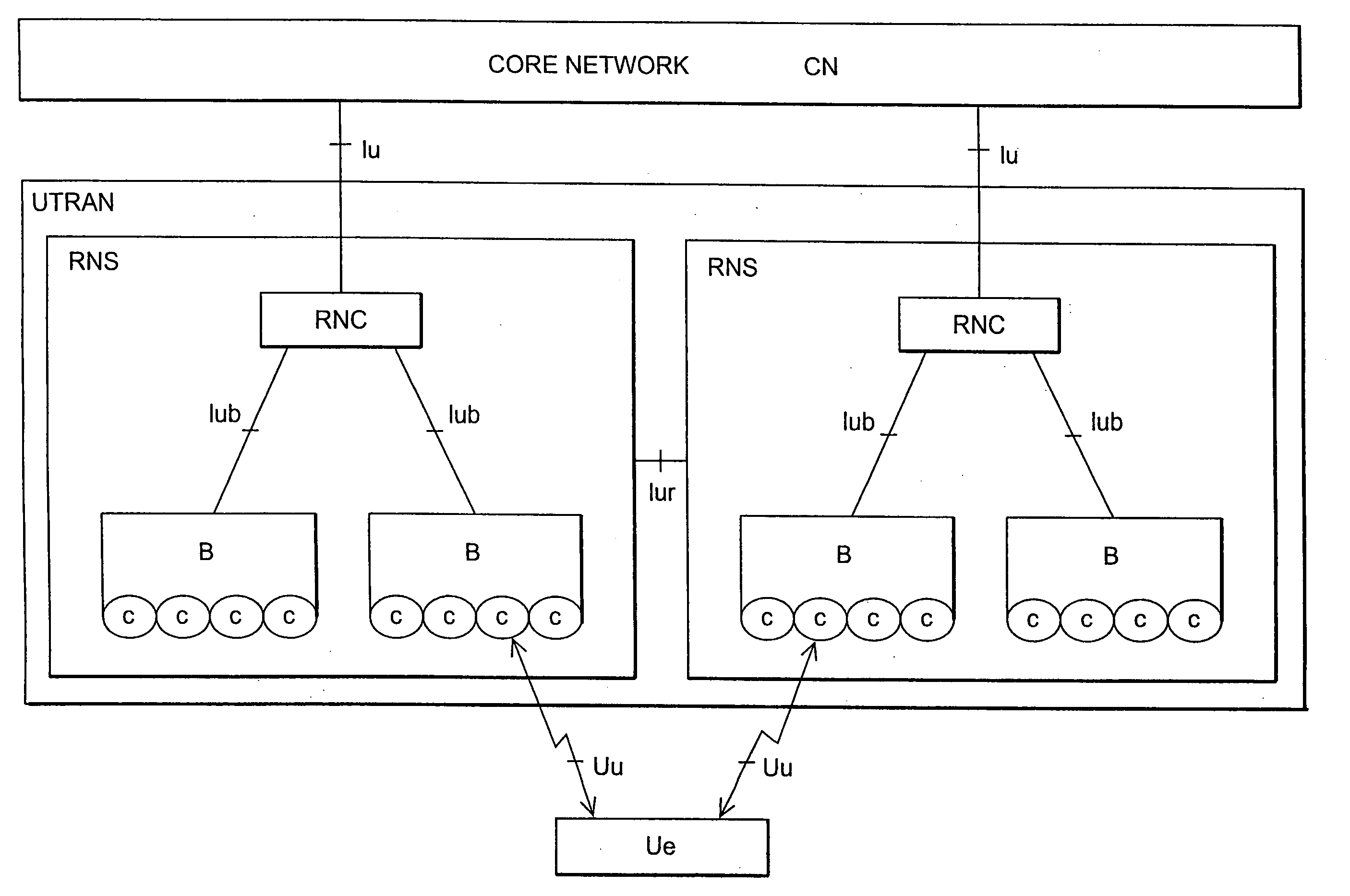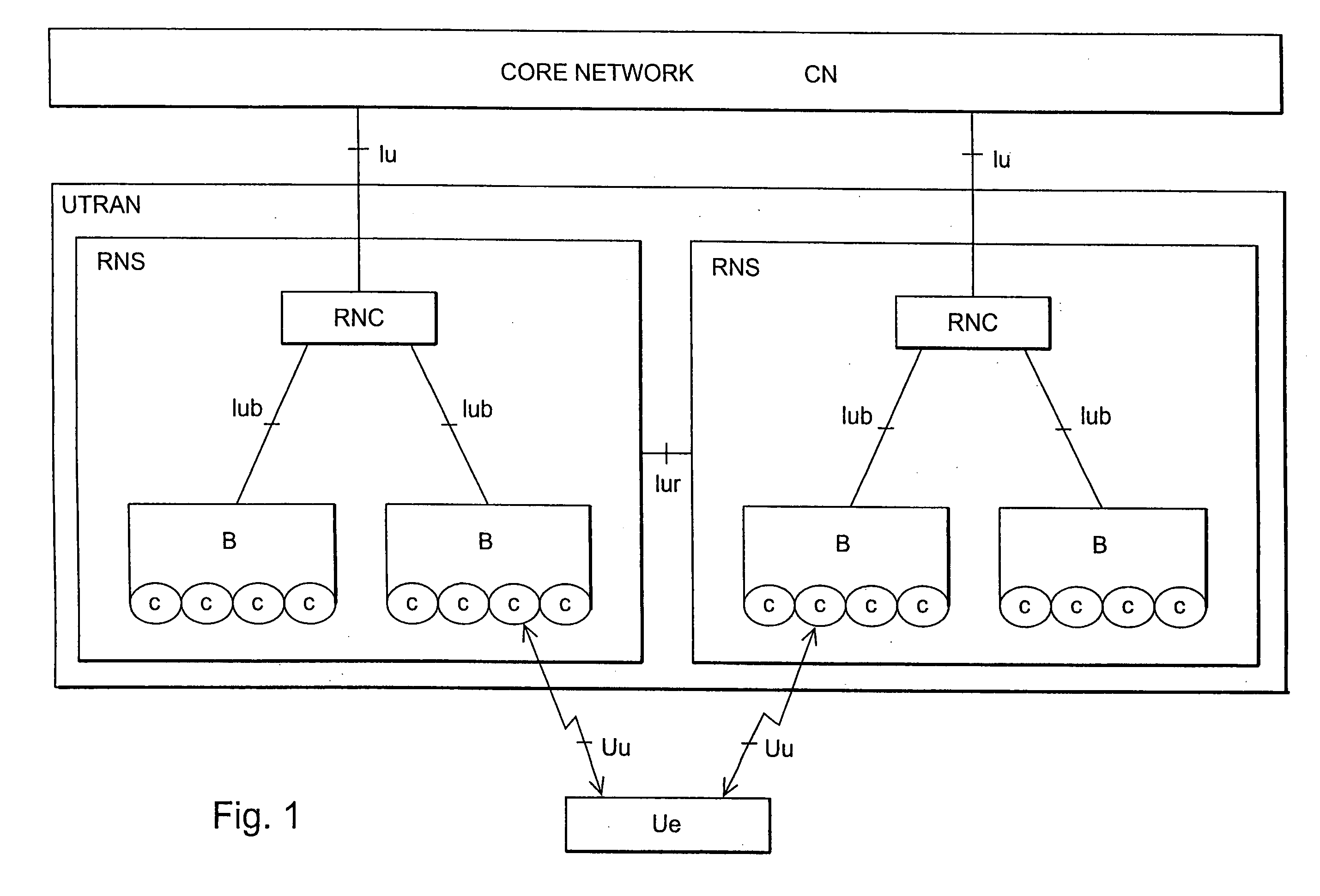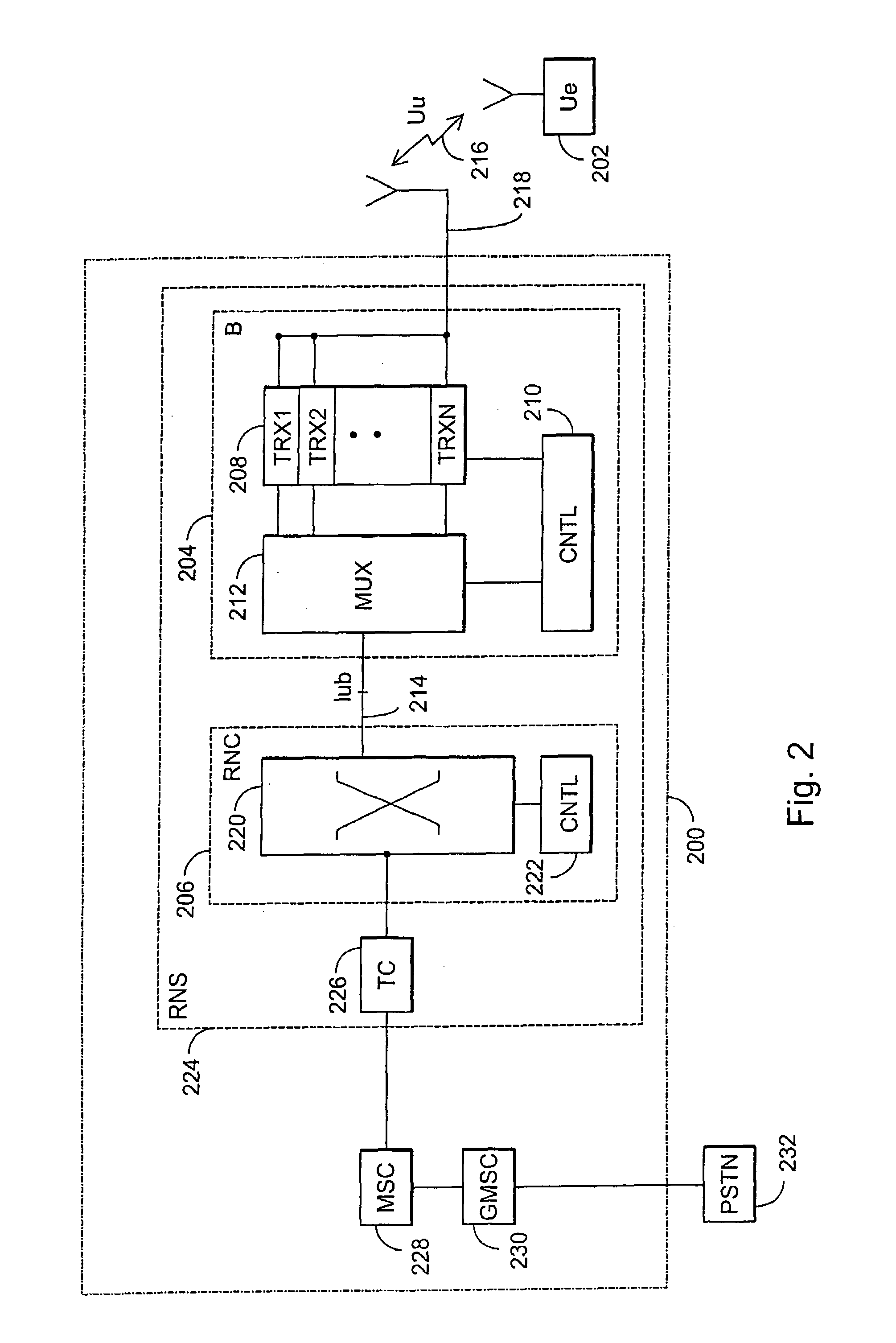Interference cancellation method and receiver
- Summary
- Abstract
- Description
- Claims
- Application Information
AI Technical Summary
Benefits of technology
Problems solved by technology
Method used
Image
Examples
Embodiment Construction
[0021]Preferred embodiments of the invention can be applied in telecommunication systems where a desired signal is transmitted and received as a wide-band one. Such a telecommunication system is a wide-band CDMA radio system, for instance. In the following example, preferred embodiments of the invention will be described in a universal mobile telephone system employing a wide-band code-division multiple access method, yet without restricting the invention thereto.
[0022]With reference to FIG. 1, a structure of a mobile telephone system is explained by way of example. The main parts of the mobile telephone system are core network CN, terrestrial radio access network of the mobile telephone system UTRAN (UMTS terrestrial radio access network) and user equipment UE. The interface between the CN and the UTRAN is called lu and the air interface between the UTRAN and the UE is called Uu.
[0023]The UTRAN comprises radio network subsystems RNS. The interface between the RNSs is called lur. Th...
PUM
 Login to View More
Login to View More Abstract
Description
Claims
Application Information
 Login to View More
Login to View More - R&D Engineer
- R&D Manager
- IP Professional
- Industry Leading Data Capabilities
- Powerful AI technology
- Patent DNA Extraction
Browse by: Latest US Patents, China's latest patents, Technical Efficacy Thesaurus, Application Domain, Technology Topic, Popular Technical Reports.
© 2024 PatSnap. All rights reserved.Legal|Privacy policy|Modern Slavery Act Transparency Statement|Sitemap|About US| Contact US: help@patsnap.com










